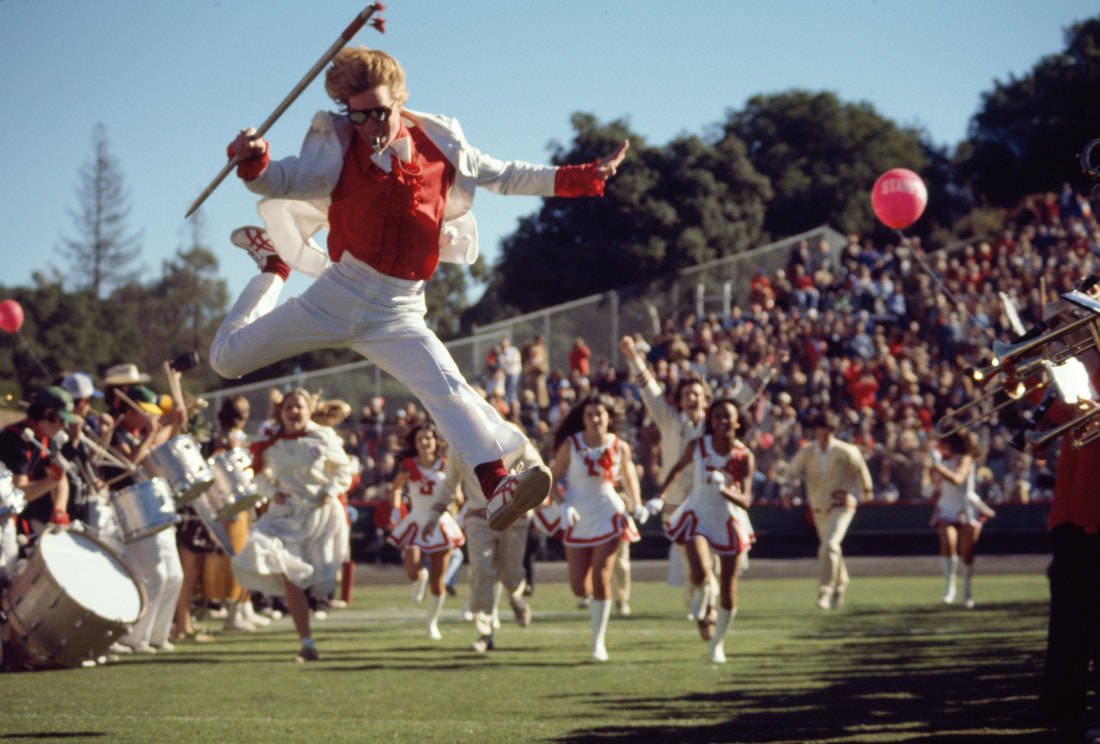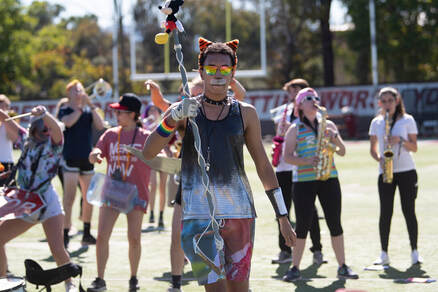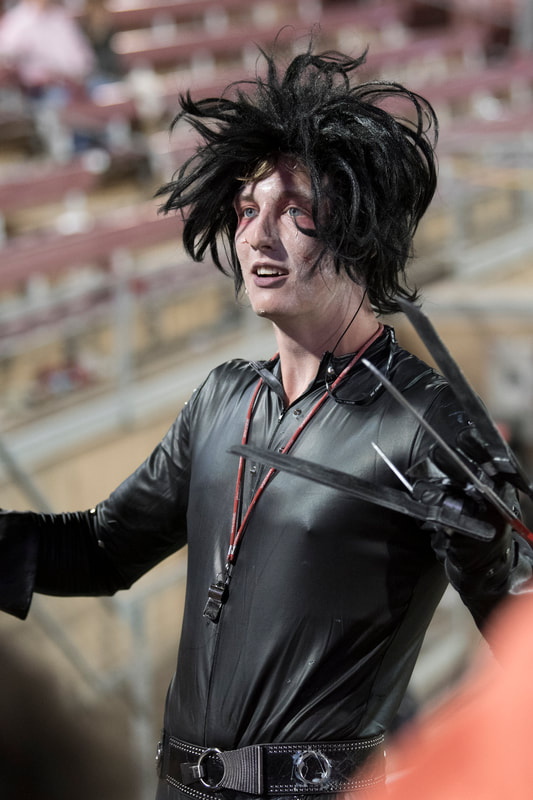A Brief History of LSJUMB
Pre-HistoryThe Stanford Band traces its origins back to the heady days of the 1890s when John Phillip Sousa was all the rage and kids ripped music from each other with gramophone records. Founded in 1893, the band marched in step, in straight lines, with dignity and reverence. Contemporaries would describe the band’s performance as either "boring" or "our school has a band?"
Nevertheless, the Stanford Band continued to support the Stanford football team for six decades in the traditional marching style with its in-step line formations, its dignity and its reverence. As the turbulent nineteen-sixties hit America, the band was doing fine with the beloved Director Jules Shucat at the helm. But everything was about to change. |
A new low in tasteless behavior. |
The StrikeIn 1963, a reorganization of the music department resulted in the dismissal of Director Shuchat, and the loyal and enraged bandsmen went on strike in protest. The band refused to perform as the first two football games of the 1963 season went by. When the University hired Shuchat’s replacement, Arthur P. Barnes, he wasn’t exactly met with open arms.
Barnes, a graduate student pursuing his doctorate in the musical arts was able to get the band back on the field by cutting a deal with the students: the Band would start playing at football games again and Barnes would allow for the Band to be student-run. This compromise was the beginning of Arthur P. Barnes’ significant legacy with the Stanford Band. |
The future lawyers, doctors, and businessmen of the USA???!!! |
I used to be a hippie in the '60s. You guys put hippies to shame.
An old hippie, Los Angeles, 2008
|
As the turbulence of the nineteen-sixties hit the Stanford campus, the fledgling organization absorbed the decade’s irreverent attitude and society-threatening rock-and-roll music. Over the course of the decade, the band threw out its military uniforms and marching style for tacky red blazers, white fishing hats and a scatter (or scramble) style of field show performance. Armed with the weapons of student autonomy, rock-and-roll music and bad fashion sense, the Band was ready to take on the world.
|
So Then What?I wish we had a band like that. The Leland Stanford Junior University Marching Band has been entertaining America ever since with its cutting-edge musical arrangements, irreverent humor, and high energy performance style. In the past 50 years, the Band has roamed the streets of South Beach, rocked out in New Orleans, crashed Baltimore, danced in Washington D.C., road-tripped across the Midwest, been looked at quizzically in China, romped about Down Under, mystified Texas, gotten booed at from haters all over, performed for the Queen of England, scrambled on national TV in five Rose Bowls (and lots of other Bowls, excluding of course the coveted Salad Bowl) and built a killer robot out of cardboard. We’ve been crazy, fun-loving, and always scattering at the drop of a white fishing hat with some red ribbon and loads of pins on it.
|
I like you guys. Keep at it. The Band is the shining example for scatter bands across the country on how to entertain thousands with rock and roll and liquid excitement, and even the strictest, tightest, most perpendicular marching bands standing at attention have to crack a smile when the One, the Only, Leland Stanford Junior University Marching band runs screaming onto the field.
|





